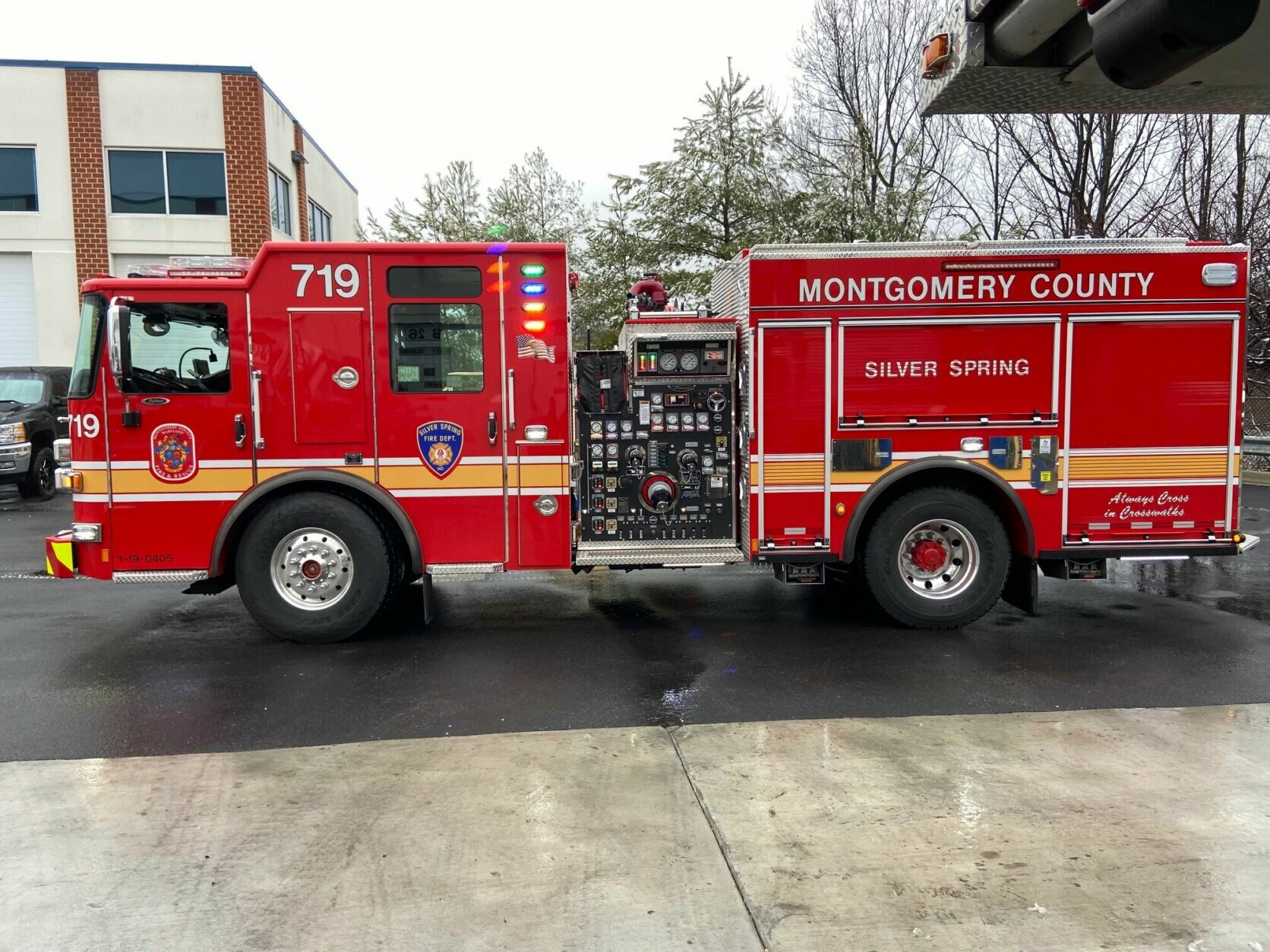
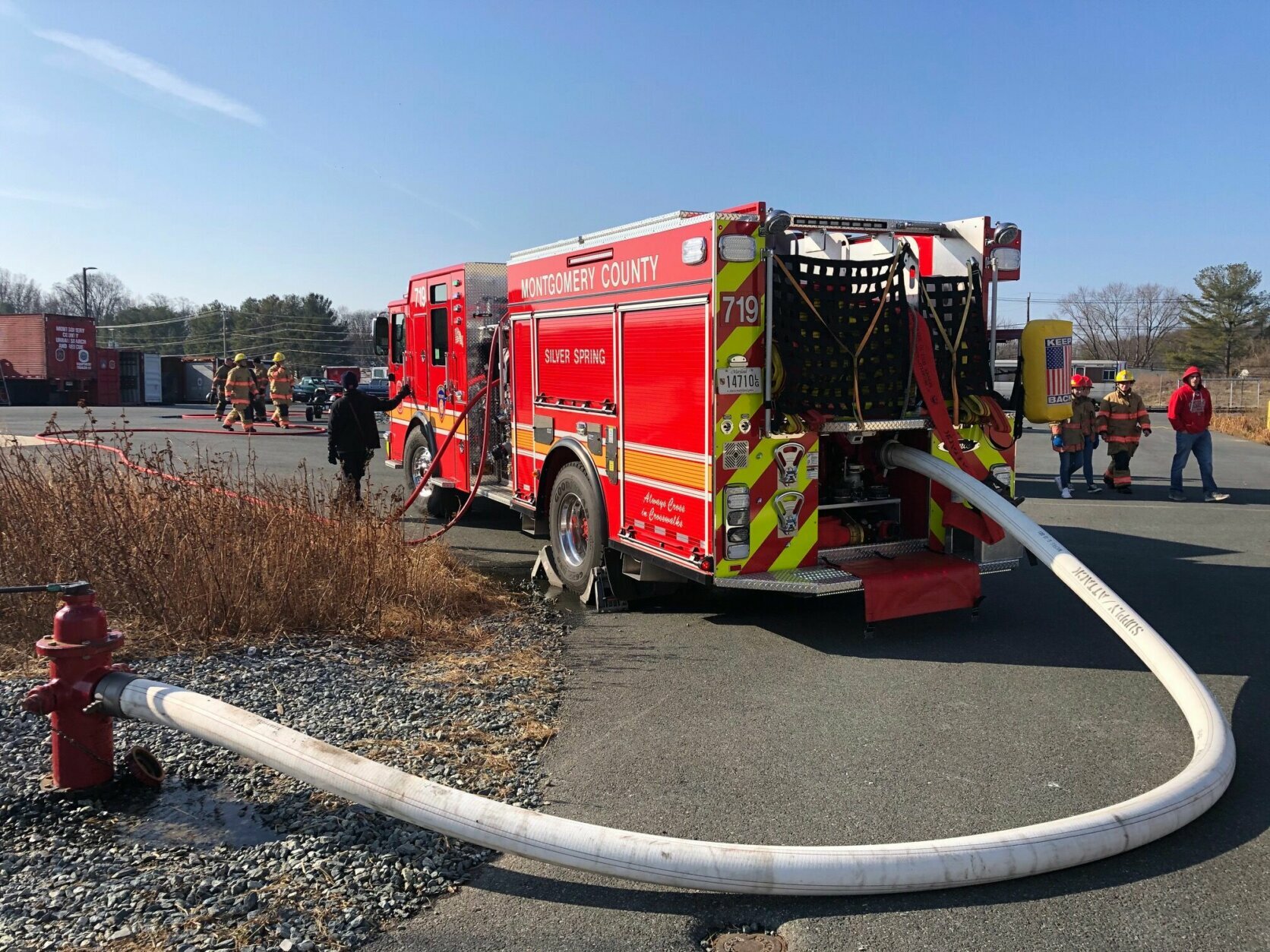
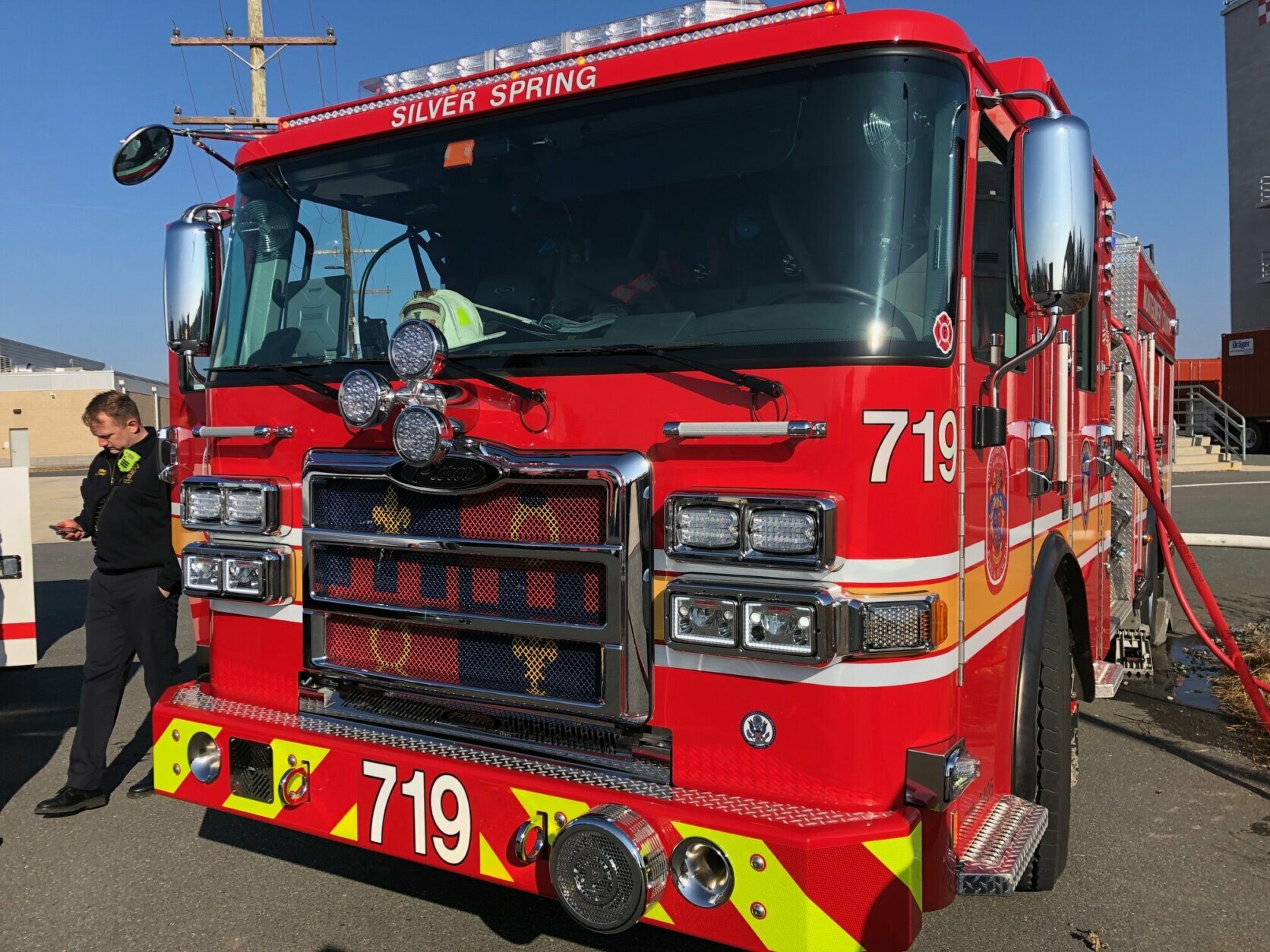
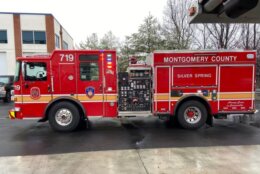
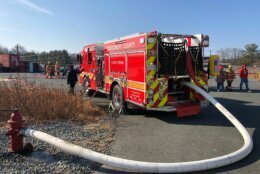
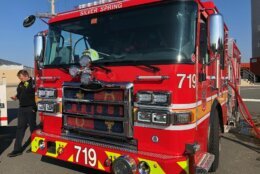
They’re still red; in fact, to a civilian, they may not look very different at all. But the fire chief in Montgomery County, Maryland, said the 23 new fire engines they’re getting in the next few weeks will make a difference in the firefighting process.
Montgomery County Fire Chief Scott Goldstein told WTOP the new engines are smaller and lower to the ground, which makes it easier, quicker and safer for firefighters to attach hoses to engines, and to get on and off the rigs. Firefighters don’t have to step up onto the engine to make hose line connections, “and that’s an ergonomic function that is critical,” Goldstein said.
The trucks also have hose lines and nozzles that are more compact and maneuverable, while pushing the same volume of water, than on the last large batch of new engines the county got in 2008. That helps firefighters when they’re pulling water lines through a home to fight a fire.
The new engines cost $25 million. The money has been part of the capital improvement budget since fiscal 2016, which allows for five new engines a year. The trucks are all showing up now because it takes a while to develop specifications and get bids, then order and build the units.
Some engines can take a year to manufacture from the time they’re ordered until they roll off an assembly line.
“It is a very drawn-out process,” Goldstein said.
Some fire stations got their units recently; others will receive theirs in coming weeks.
Also, 16 ambulances are on order and in the production process with delivery expected in February or March. Three heavy rescue squad units, used mostly to cut people out of car wrecks, are in the engineering and construction process.
The county has 35 engine companies and 42 EMS units that are on a rotating schedule for replacements. Some of the engines that now can be taken out of service are 20 years old.
“We are back on track with our apparatus replacement plan,” Goldstein said.
Finally, a bit of advice from the chief: “Hear us, see us, clear for us,” Goldstein said, stressing that you need to get out of the way so firefighters can proceed to emergency scenes safely.








